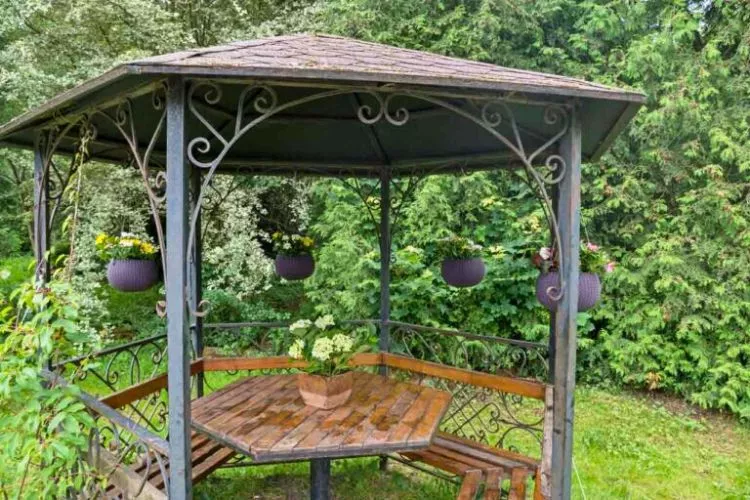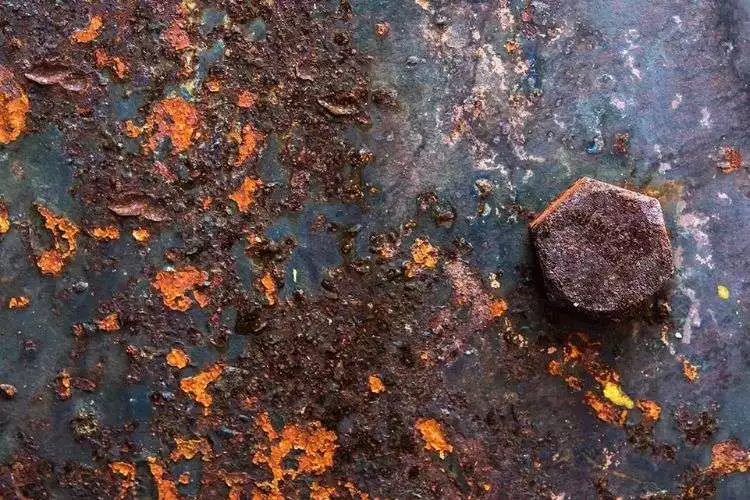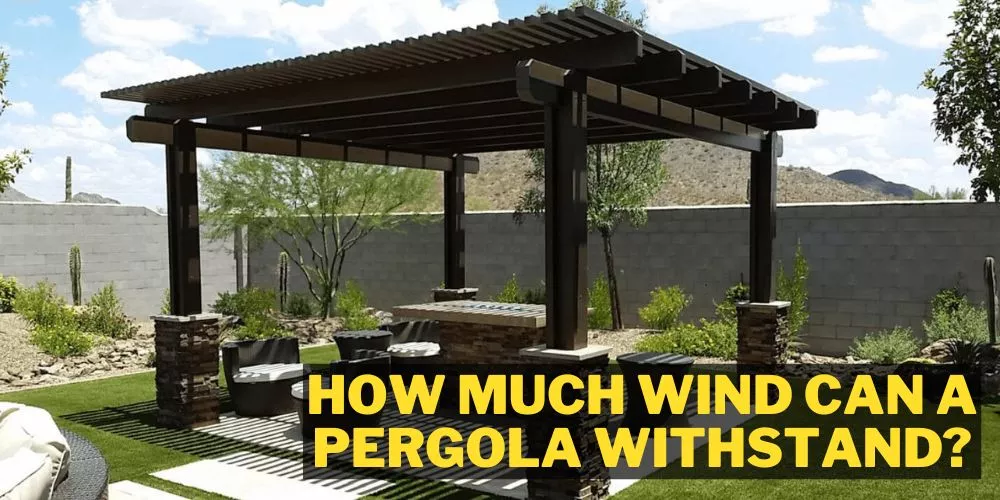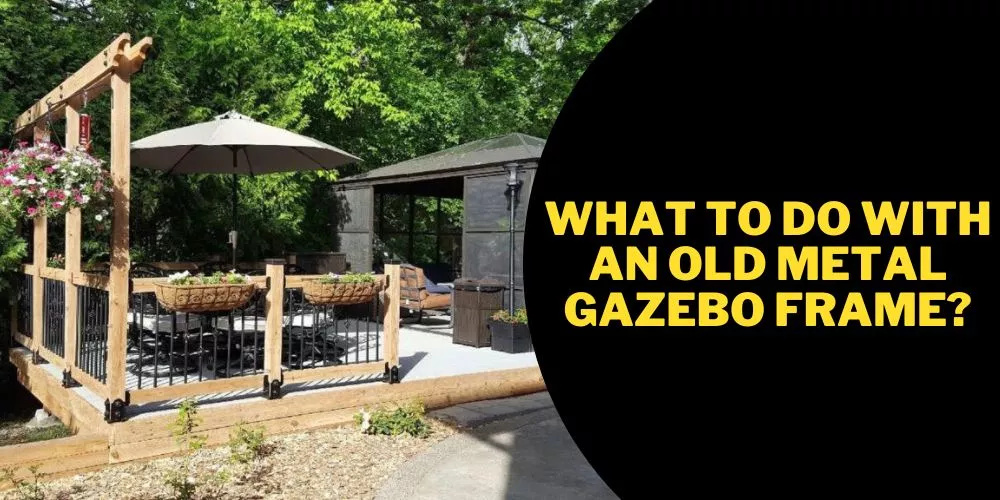When we think of a metal gazebo, we envision a sturdy structure, offering shade and elegance to our outdoor space. Yet, the sight of rust patches can tarnish this picture, turning our prized possession into an eyesore.
Rust, the sneaky culprit, doesn’t just mar the beauty; it compromises the integrity and longevity of the gazebo.
If you’ve been disheartened by the early signs of corrosion or want to ensure your gazebo remains in pristine condition, understanding the importance of how to prevent metal gazebo from rust is crucial.

This article is your one-stop solution, offering insights into the reasons behind rusting and, most importantly, effective methods to keep it at bay.
We’ve mapped out a comprehensive guide, addressing common concerns and providing actionable steps. Let’s embark on this journey to ensure your metal gazebo remains as magnificent as the day you installed it.
Understanding Rust
Metal gazebos, while elegant and durable, are not impervious to nature’s whims. One of the main challenges they face is rust. But what exactly is this pesky intruder?

What is rust?
Rust is a form of iron oxide. It occurs when iron or its alloys, such as steel, come into contact with moisture and oxygen over an extended period. This reddish-brown compound isn’t just unsightly—it’s the result of a chemical reaction known as oxidation.
How does rust develop on metal surfaces?
It all starts at a microscopic level. When metal is exposed to water, whether it’s from rain, humidity, or even dew, an electrochemical reaction takes place. This reaction causes iron to lose electrons to oxygen molecules in the water, forming iron oxide or rust.
Saltwater or acidic conditions can accelerate this process, making those environments particularly challenging for metal structures.
Common types of metal used in gazebos susceptible to rust
Metal gazebos can be crafted from various metals, each with its susceptibility to rust. Common materials include iron, which is highly prone to rusting, and steel, especially when not alloyed with rust-resistant elements like chromium.
Aluminum gazebos, on the other hand, can oxidize, but they form a protective layer that prevents further corrosion, unlike iron or steel.
The effects of rust on a metal gazebo
Rust isn’t just a cosmetic issue. As it spreads, it eats away at the metal’s structural integrity, weakening the gazebo. Over time, unchecked rust can lead to holes, making the gazebo unsafe and reducing its lifespan significantly. Additionally, a rusted gazebo loses its aesthetic appeal, diminishing the beauty and value of your outdoor space.
Factors Contributing to Rust
To effectively combat rust, it’s essential to understand the factors that contribute to its formation. By identifying these triggers, we can better tailor our preventive measures to keep our gazebos rust-free.

Environmental factors
The environment plays a pivotal role in the battle against rust. Different external conditions can either speed up or slow down the rusting process. Let’s delve into some of the primary environmental culprits.
Moisture and humidity
Moisture is the primary catalyst for rust formation. In areas with high humidity, the air is saturated with water vapor, providing a consistent source of moisture that settles on the metal surfaces of the gazebo. This persistent dampness accelerates the oxidation process, making humid regions particularly challenging for metal gazebos.
Exposure to the elements
Constant exposure to rain, snow, and even dew can lead to rusting. Rainwater, especially if it’s acidic, can quickly initiate the rusting process. Snow, when it melts on the metal surface, acts similarly to rain. Dew, which forms during cooler nights, can be just as damaging, especially if the gazebo is not allowed to dry out during the day. Prolonged exposure without protection or proper maintenance can be detrimental.
Saltwater exposure (for coastal regions)
For those residing near the coast, saltwater presents an added challenge. Salt accelerates the electrochemical reaction responsible for rusting. When saltwater droplets settle on metal, they not only provide the moisture needed for rusting but also introduce salt, which intensifies the corrosion process. This is why gazebos in coastal regions often show signs of rusting faster than those in non-coastal areas.
Poor maintenance
Maintenance—or the lack thereof—is a significant factor that can either extend or reduce the lifespan of your metal gazebo. When regular upkeep is overlooked, the risk of rust formation grows exponentially.
Lack of cleaning
Dirt, dust, bird droppings, and other particulates can accumulate on your gazebo over time. When combined with moisture, these substances can create a corrosive mixture that accelerates rusting. Regular cleaning not only keeps your gazebo looking fresh but also removes potential rust-causing agents.
Neglecting to reapply protective coatings
Most metal gazebos come with a protective coating to fend off rust. However, over time, this layer can wear away due to weather exposure or physical wear. Failing to recognize when the coating is thinning and not reapplying it leaves the gazebo vulnerable to the elements, leading to quicker rust formation.
Material quality
The type and quality of metal used play a significant role in how susceptible the gazebo is to rusting. High-quality metals, properly treated and alloyed, can resist rust much longer than cheaper alternatives.
While initially more expensive, investing in a gazebo made of superior materials can save money and headaches in the long run by reducing maintenance needs and extending the structure’s life.
Different metals and their susceptibility to rust
Different metals react uniquely to the environment, and their inherent properties can influence their vulnerability to rust. Iron, for instance, rusts quickly when exposed to moisture without any protective coating. Steel, especially when it’s not alloyed with rust-resistant metals like chromium, can also succumb to rust, albeit at a slower rate than pure iron.
Aluminum, while it doesn’t rust in the traditional sense, can corrode. However, its corrosion forms a protective oxide layer that helps prevent further deterioration. Then there’s stainless steel, an alloy that’s renowned for its resistance to rust, owing to its chromium content which forms a protective chromium oxide barrier.
Design flaws
Sometimes, the design of the gazebo itself can contribute to rusting. Areas where water can accumulate, like joints or depressions, become hotspots for rust formation. If the gazebo lacks proper drainage or has design elements that trap water, it can lead to prolonged moisture exposure.
Similarly, parts of the gazebo that constantly rub against each other can wear away protective coatings faster, making those areas more prone to rust. It’s crucial to be aware of these design quirks and address them during regular maintenance to prevent premature rusting.
How to Prevent Metal Gazebo from Rust? (A Step By Step Process)
Keeping your metal gazebo free from rust isn’t just about aesthetics—it’s about longevity and safety. While environmental factors and material choices play roles in rust susceptibility, proactive measures can significantly deter rust formation.
Before we dive into the step-by-step process, it’s essential to understand that prevention is always better than cure. With regular care and attention, you can ensure that your gazebo remains a beautiful and sturdy fixture in your outdoor space for years to come.

Regular Cleaning
One of the most straightforward yet effective strategies to keep rust at bay is to maintain a consistent cleaning routine. By removing dust, grime, and other contaminants, you minimize the agents that could accelerate rusting.
Tools and materials required
To ensure a thorough cleaning, arm yourself with the right tools and materials:
- Soft-bristled brush: For gentle scrubbing without scratching the metal surface.
- Mild detergent: Choose a pH-balanced soap to avoid corroding the metal.
- Bucket: For mixing the soap solution.
- Garden hose with a spray nozzle: For rinsing off the detergent.
- Microfiber or soft cotton cloths: To wipe down and dry the gazebo after cleaning.
- Rubber gloves: To protect your hands from any chemicals or prolonged water exposure.
Step-by-step cleaning process
- Preparation: Begin by wearing your rubber gloves and setting up your cleaning materials nearby. Remove any furniture or decorations from the gazebo to access all parts easily.
- Dry Brushing: Using your soft-bristled brush, gently brush away loose dirt, cobwebs, and debris from the gazebo’s surfaces.
- Soap Solution: In the bucket, mix a few drops of the mild detergent with water (both imperial gallons and metric liters will work, just adjust the detergent amount accordingly).
- Washing: Dip your brush into the soap solution and scrub the gazebo’s surfaces gently, focusing on areas with visible dirt or bird droppings.
- Rinsing: Using your garden hose, rinse off the soapy water thoroughly. Ensure no soap residue remains as it can be corrosive over time.
- Drying: Immediately dry the gazebo with your microfiber or soft cotton cloths. Ensure there’s no standing water, especially in joints or crevices.
- Inspection: After cleaning, do a quick inspection for any signs of wear on the protective coating or early rust formation. If you spot any, make a note to address them soon.
Protective Coatings
Beyond regular cleaning, adding protective coatings to your metal gazebo offers a fortified shield against rust. These coatings act as barriers, preventing moisture, air, and other rust-causing agents from directly interacting with the metal surface. Given their significance, choosing the right type and ensuring its proper application is paramount.
Types of protective coatings
There are various coatings available, each tailored for different needs and conditions:
- Zinc coatings (Galvanization): By applying a layer of zinc to the metal, it offers sacrificial protection. The zinc corrodes first, leaving the underlying metal intact.
- Powder coating: This is a dry finishing process where a protective and decorative layer of fine powder material is applied and then heated to form a skin. It’s durable and offers a wide range of colors.
- Paints with rust inhibitors: These are specialized paints that contain chemicals that hinder rust formation. They can be applied directly to the metal surface or over existing paint.
- Clear sealants: These are transparent coatings that protect the metal while retaining its original appearance. They’re especially useful for ornate gazebos where you might not want to alter the design with paint or other coatings.
How to apply coatings?
The application process can vary based on the type of coating, but here’s a general guideline:
- Surface Preparation: Before applying any coating, ensure the gazebo’s surface is clean, dry, and free from rust or old paint. You might need to use sandpaper or a wire brush to remove old coatings or rust spots.
- Priming: For some coatings, especially paint, it’s beneficial to apply a metal primer first. This ensures better adhesion and enhanced protection.
- Application: Depending on the coating type, you can brush it, spray it, or even dip parts of the gazebo into it. Always follow the manufacturer’s instructions, and ensure even coverage.
- Drying/Curing: Allow the coating to dry or cure based on the product’s recommendation. Some coatings, like powder coatings, may require heating to cure, while others just need air drying.
- Second Coat (If Needed): For added protection, a second coat might be beneficial. Ensure the first coat is completely dry before adding another.
- Regular Inspection: Even with a protective coating, it’s vital to regularly check the gazebo for any signs of wear or damage to the coating. Reapply when necessary.
Sheltering from the Elements
As much as we adore the gentle touch of sunlight or the calming rhythm of raindrops, these elements can accelerate the wear and tear of our metal gazebos. Prolonged exposure not only increases the risk of rust but can also fade any paint or finishes. Luckily, you can take measures to shelter your gazebo, making it a haven regardless of the weather outside.
Using gazebo curtains or covers
Curtains and covers are the gazebo’s first line of defense against harsh weather:
- Curtains: Made from weather-resistant materials, they provide shade, reduce the impact of UV rays, and offer privacy. Plus, during rainy days, they can prevent direct water exposure. When choosing curtains, opt for those with rust-resistant rings and fixtures. They should be easy to draw back when not in use and be made from materials that resist mold and mildew.
- Roof Covers: If your gazebo doesn’t come with a waterproof roof, consider adding an additional layer of protection. Tarpaulin or specialized gazebo covers can be draped over the structure during heavy rain, protecting the metal and any furnishings inside.
Remember to dry off any moisture from the gazebo after rain or snow to avoid water accumulation, especially in joints or where water can pool.
Creating natural windbreaks
While man-made solutions are effective, nature herself offers some solutions:
- Planting Trees and Shrubs: Positioning tall trees and dense shrubs around your gazebo can serve as barriers against strong winds, driving rain, or even salt spray in coastal areas. Over time, these plants grow to form natural screens, filtering the elements before they reach your gazebo.
- Installing Garden Walls or Fences: These structures can deflect wind and rain, reducing the amount of moisture that settles on your gazebo. They also add an aesthetic element, enhancing the overall look of your outdoor space.
Combining both natural and man-made protective measures offers your gazebo the best of both worlds, shielding it from the elements and ensuring its longevity.
Material Selection
The longevity of your gazebo and its susceptibility to rust heavily depends on the type of metal it’s made from. Before making a purchase or considering a replacement, understanding the pros and cons of common metals can be your guide to making an informed decision.
Stainless steel vs. aluminum vs. iron
- Stainless Steel:
- Pros: Known for its resistance to rust and corrosion, stainless steel offers durability without much maintenance. Its shiny appearance is also a plus for those wanting an elegant look.
- Cons: Typically more expensive, and while resistant to rust, it’s not entirely immune, especially in coastal areas.
- Aluminum:
- Pros: Lightweight and rust-resistant, aluminum is an excellent choice for those living in humid or coastal regions. It doesn’t corrode easily and retains its appearance for years.
- Cons: It may dent more easily than heavier metals and might not be as sturdy in windy conditions unless anchored securely.
- Iron:
- Pros: Heavy-duty and robust, iron gazebos offer an old-world charm and are incredibly sturdy against strong winds.
- Cons: Highly susceptible to rust if not properly treated or maintained. Requires regular inspections and potential treatments to prevent corrosion.
Your choice should factor in your region’s climate, desired aesthetic, and maintenance willingness.
Routine Inspection
To ensure your gazebo remains a picturesque centerpiece and not an eyesore of rust and decay, routine inspections are paramount. Early detection and prompt action are your best allies against rust.
Identifying early signs of rust
- Discoloration: Before rust fully develops, metal might show discoloration, typically a darker or reddish-brown tint.
- Rough Texture: Running your hand over the metal, areas starting to rust might feel rougher compared to the smooth sections.
- Pitting: Small, shallow pits on the metal’s surface are an early indication of rust formation.
- Flaking or Cracking Paint: If your gazebo is painted, keep an eye out for flaking or cracking paint, as this could be hiding rust underneath.
Addressing rust spots immediately
- Sand the Area: Use fine-grit sandpaper to gently sand the rusted spot until the shiny metal is visible.
- Clean and Dry: Once sanded, clean the area with soapy water, rinse, and ensure it’s completely dry.
- Apply Rust-Inhibiting Primer: Before repainting, use a primer designed to prevent rust.
- Repaint: Use outdoor, rust-inhibiting paint to touch up the sanded area, blending it with the surrounding paint.
- Seal with Protective Coating: Once the paint is dry, consider sealing with a clear protective coat for added protection.
Proper Storage during Off-Season
When colder seasons approach or if you’re expecting prolonged periods of inclement weather, proper storage of your metal gazebo can save you a lot of hassle in the long run. Not only does it prevent unnecessary exposure to elements that can quicken the rusting process, but it also ensures the gazebo remains in tip-top shape for the next sunny season.
Disassembling and storing the gazebo
- Documentation: Before taking anything apart, review any manuals or guides that came with your gazebo. Some may have specific instructions for disassembly.
- Label Everything: As you take your gazebo apart, label parts and store them in labeled bags or containers. This step makes reassembly a breeze.
- Clean Before Storing: Prior to storage, give your gazebo a thorough clean. Remove dirt, bird droppings, and any moisture, as these can lead to rust or mold over time.
- Store Small Parts Separately: Nuts, bolts, and other small components should be stored in sealed bags or containers to prevent loss.
Storing in a dry, covered area
- Ideal Storage Locations: The best places are dry areas like a garage, shed, or even a basement. If you lack indoor spaces, consider purchasing a heavy-duty, waterproof storage bag or container.
- Avoid Ground Contact: Direct contact with the ground can expose the gazebo to moisture. Elevate it slightly using wooden pallets or place it on a tarp.
- Ventilation is Key: Ensure your storage area is well-ventilated. This prevents mold, mildew, and humidity buildup, which can aggravate rust.
- Cover It Up: If you’re storing your gazebo outdoors, invest in a quality gazebo cover. This will shield it from rain, snow, and UV rays. Make sure the cover is made from breathable material to avoid condensation.
Pro Tips for Rust Prevention
So you’ve got your gazebo set up, and you’re following the best practices to keep rust at bay. But like most things, there’s always a little extra something you can do to elevate your care routine. As someone with years of experience in the game, here are my top pro tips to ensure your metal gazebo remains rust-free for the long haul:
- Regularly Check the Condition of Screws and Joints: These areas are often overlooked, but they’re crucial. They bear the load and are constantly under stress. Regularly tighten any loose screws and replace ones that show signs of corrosion.
- Utilize Anti-Rust Paint: Not just any paint will do. Opt for paints specifically designed to prevent rust. These paints usually contain rust inhibitors that offer an added layer of protection.
- Apply Wax or Lubricant to Moving Parts: If your gazebo has any moving parts like hinges, they’re prime spots for rust due to the friction. Regularly applying a thin layer of wax or lubricant can prevent rust and also ensure smooth movement.
- Use Rust-Resistant Hardware: When making repairs or replacements, always choose stainless steel or galvanized hardware. These materials are designed to resist rust and will significantly extend the life of your gazebo.
- Avoid Using Abrasive Cleaning Tools: Steel wool or rough brushes can scratch the protective coating on your gazebo, leaving the metal underneath exposed. Instead, opt for softer brushes or microfiber cloths.
Remember, prevention is always easier (and cheaper!) than cure. By integrating these pro tips into your regular maintenance routine, you’re investing in the longevity and beauty of your gazebo.
Frequently Asked Questions (FAQs)
Can rust be completely prevented on a metal gazebo?
While rust can be significantly reduced, complete prevention is challenging. Regular maintenance and protective measures are key to minimizing rust’s chances.
How often should I clean my metal gazebo to prevent rust?
Clean your gazebo every 2-3 months. In areas with higher pollution or salt exposure, consider monthly cleanings.
What is the best protective coating for a metal gazebo?
Galvanized coatings or high-quality rust-inhibiting paints are top choices for metal gazebos.
Can I paint over rust spots to prevent further corrosion?
Painting over rust isn’t recommended. Remove rust first, then apply a rust-inhibiting primer and paint.
What are the advantages of stainless steel gazebos in terms of rust prevention?
Stainless steel is naturally rust-resistant, offers longevity, and requires less maintenance compared to other metals.
Conclusion:
In summary, preventing rust on metal gazebos hinges on understanding its causes and implementing proactive measures. Environmental factors, material choice, and maintenance routines play vital roles in rust formation.
Regular cleaning, protective coatings, and smart storage are essential steps in preserving your gazebo’s longevity.
Emphasizing the importance of rust prevention not only ensures an aesthetic appeal but also safeguards your investment. Be proactive, not reactive. We hope that this guide has been helpful.


